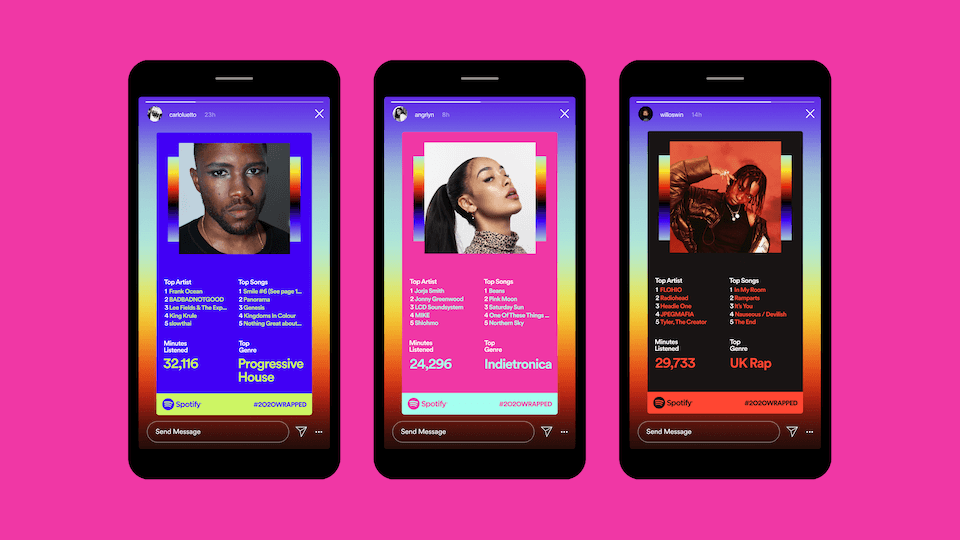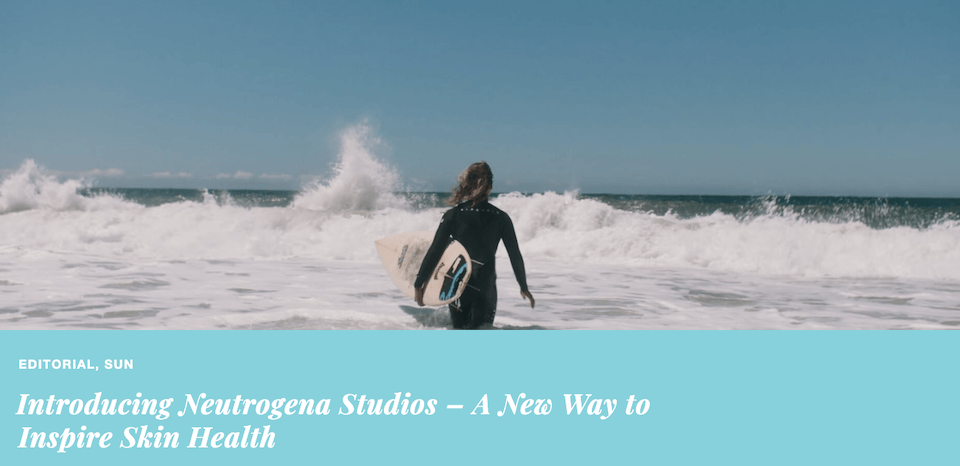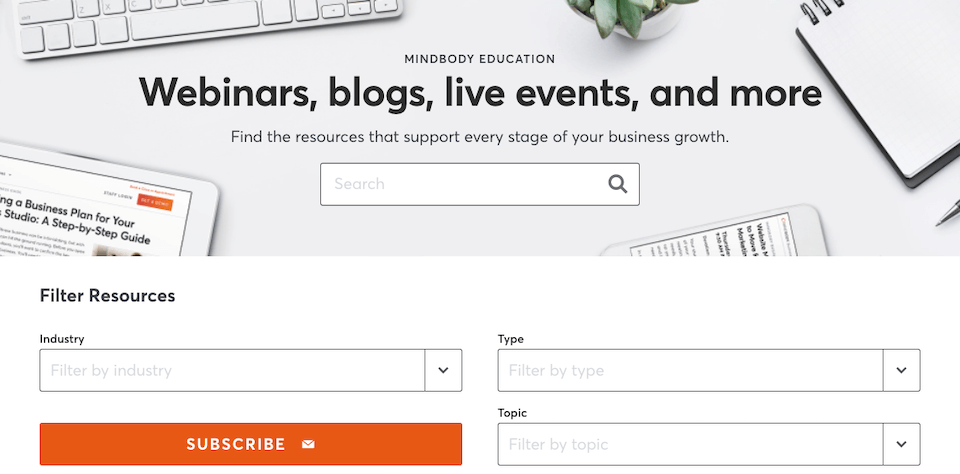
10 Excellent Content Marketing Examples to Inspire Your Strategy
Oct 13, 2023|Read time: 13 min.
Key Points
- Content marketing is constantly changing based on tech innovations, consumer behavior, and other market conditions.
- Using consumer behavior and human psychology to shape your content marketing can significantly impact how customers and prospects view your brand.
- Look at successful content marketing examples from other brands to build better inbound marketing campaigns.
Content marketing at scale can feel like an exhausting, uphill battle that never ends. The pressure to perform coupled with volume expectations can quickly sap creative juices. Fortunately, there are plenty of creative content marketing examples to give you a burst of much-needed inspiration.
Regardless of the industry, major brands paved the way with endless types of content marketing formats that will delight your audience — and more importantly, spark a connection.
So to better understand what great looks like, here are 10 compelling examples to inspire your next content marketing campaign.
Make Connections that Matter
Uncover what your customers are looking for in real time and meet their needs with valuable content.
Content marketing landscape
As businesses transition out of the COVID pandemic, there has been a divide on returning to brick-and-mortar stores or embracing new ecommerce experiences.
Furthermore, cord-cutters are on the rise (which reduces broadcast audiences) and paid digital advertising has lost its potency.
So, how do marketers reach their target audiences without more traditional marketing campaigns? Is it even possible to deliver real, lasting brand value in the absence of budget-busting commercials?
The short answer is yes. While the road forward is still unfolding, crafty marketers have leveraged digital campaigns to generate brand awareness for years. The best content marketing examples do more than entertain; they drive measurable results.
10 Awesome content marketing examples
Even if your content marketing team isn’t in a rut, watching how different industries are creating viral content keeps your strategy ahead of the curve.
The following brands have increased exposure and visibility by aligning their marketing with what customers want. Moreover, they developed optimized content in direct alignment with Google, so they also dominate the organic search landscape.
To help inspire new content marketing ideas, we decided to highlight 10 fresh examples of how large enterprises use similar tactics in their content strategies to win new business.
Content Strategy Playbook
The Fortune 500 CMO’s guide to content strategy.
Video content marketing examples
An engaging video is a powerful way to reach a target audience who prefers visual content. Not everyone appreciates blog content, wants to download in-depth digital marketing materials, or subscribes to email marketing campaigns.
Successful content marketers provide valuable information in formats that resonate with their entire audience.
1. Mint Mobile
Mint Mobile is a mobile virtual network operator founded in 2012. In 2019, actor Ryan Reynolds became an owner of Mint Mobile. Previously, Reynolds was the owner of Aviation Gin. This is where the public learned about Reynold’s keen eye for marketing.
Reynolds brought his brand of casual, no-frills, comedic wit to Mint’s video content. Most Mint Mobile videos are of Reynolds speaking in front of a green background. The simple format made it easy to adjust and incorporate trending topics (such as featuring Jury Duty star, Ronald Gladden) alongside its evergreen video content.
In March 2023, T-Mobile announced it would acquire Mint Mobile for $1.35 billion. However, T-Mobile confirmed that Reynolds would continue his creative role at the company. This drives home the pure value that comes from a strong content strategy, specifically in the video category.
While a small business may not have access to a major Hollywood actor as its spokesperson, there are some takeaways. If done correctly, snappy, funny content can do wonders when it comes to creating a strong brand voice.
2. Jake From State Farm
Jake From State Farm is a State Farm Insurance Company viral video marketing campaign that has been around for years. The original commercial has millions of views on YouTube. If you’ve had cable television in the last ten years, you are likely familiar with Jake From State Farm.
In 2020, Jake From State Farm went through a change. But, what makes the Jake From State Farm campaign so unique is that it never strays too far from the original iteration. In the video campaign, the new Jake — like the old Jake — is confronted with strangers doing bizarre things to get a good deal on their car or home insurance.
He reassures them that State Farm gives good deals to everyone. The narrative is comforting, and when Jake appears on customers’ TV or computer screens, he can be a welcome, funny, and familiar presence.
In psychology, this concept is known as cognitive fluency, which notes the level of ease of how an audience processes information. In other words, State Farm uses the Jake character for customers to feel more at ease processing the information they want to get across.
This is a subtle example of content marketing that leverages behavioral science to reach new audiences. It’s also highly effective in these post-pandemic days.
3. The General

As far back as 2001, The General inundated cable television with commercials featuring a jingle and a CGI man in a military uniform. This had all of the hallmarks of an old-school marketing campaign. These commercials often went viral, but not for the right reasons. The brand was seen as hokey, and it didn’t garnish much trust from prospective customers.
So, in 2020, the insurance company rebranded and replaced the old CGI character with notable celebrities.
In one commercial, a group of hikers led by Craig Robinson stumbles upon Shaquille O’Neal in the middle of the woods. Craig confesses that it was a mistake to banish Shaq to the deep forest for suggesting the group try The General for their auto insurance needs.
Craig admits that they thought Shaq was “losing it” for suggesting The General. But then they realized it was just the cheesy commercials that made The General seem untrustworthy. Craig admits The General has been a “Quality insurance provider for nearly 60 years.”
This is a brilliant example of content marketing because it’s so relatable. The characters explain how they felt the same way consumers do, but they had a change of heart. The ad directly acknowledges consumer sentiment, fosters trust, and asks people to give it a try.
OAO 101
The Intro Email Course
4. Slack’s Frontiers Conference
Each year, Slack hosts an annual conference to meet and educate its 630,000 global customers. Slack experienced considerable business growth when many companies went remote to combat the spread of COVID-19.
The Slack Frontiers conference is an excellent opportunity for businesses to learn more about the brand’s growing service offering.
To generate demand for the conference, Slack publishes videos on its YouTube channel geared towards decision-makers at brands who need a solution to interoffice, remote communication. The videos are brilliantly targeted and address current concerns that brands and executives have. In addition to the conference, Slack doubles down on powerful growth marketing hacks.
Social media content marketing examples
Datareportal reported that in July 2023, 4.88 billion people worldwide use social media. This accounts for 60.6 percent of the global population. To fully amplify the reach of any marketing campaign, brands must evaluate how their social media content is performing and how they can meet the audience where they are. Below are a few examples of content marketing in which brands reach the consumer at the right time, on the right social channels, and with the right message.
5. Spotify’s Wrapped (user data-driven campaign)

In 2017, music streaming platform Spotify launched a data-driven social media campaign called “Wrapped.” The campaign took listeners’ data and produced a series of eye-catching, fun stats on listening behavior. The reason it worked so well is because Spotify paid close attention to user experience and made these slides highly shareable and aesthetically pleasing.
Fast-forward to today and Spotify Wrapped is now a highly anticipated event for musicians and music lovers. Spotify has also continued to enable and encourage listeners, musicians, and even podcasters to share their Wrapped on social platforms. In a way, Spotify is leveraging its audience for influencer marketing, with a dash of testimonials for good measure.
Sign-ups for the app increased by 21 percent in December 2020 — signaling new users were eager to get in on the fun. Wrapped is an incredible example of influencer-driven social media content marketing. This proves that creating a campaign with user-specific data and visually appealing, highly shareable elements across social media platforms is a recipe for big success.
6. Duolingo TikTok
With Apple’s App Store offering nearly 1.8 million apps, businesses have a lot of competition when it comes to gaining potential customer’s attention.
One app dealing with this struggle was Duolingo, an educational app designed to teach users different languages. One day, its Global Social Media Manager, Zaria Parvez, learned that TikTok has 1 billion monthly active users. Her first thought?
“If people are on the TikTok app, they’re not on ours.”
This revelation led the brand to revamp its TikTok strategy from more product-centric posts to content creation that frames the brand’s mascot Duo, a large green owl, as an influencer. The brand fully embraced memes, interacting with user-generated content in a casual tone through comments and video replies. This shift has worked wonders for the brand with Duolingo’s TikTok.
The lesson to walk away with here is that your audience on social media platforms is constantly searching for value, and the value can change across platforms. One value your audience may be looking for is entertainment.
However, it’s not just entertainment for entertainment’s sake. It’s entertainment tailored to your brand’s unique voice that also provides an authentic chance for your audience to connect. While you may not be interested in doing TikTok dances, it’s still a good idea to understand what entertains your audience and adapt your brand voice to meet them where they are.
7. Wendy’s X account
Similar to Duolingo, brands have started to embrace a snarky, casual brand voice on social media. However, there’s one brand that pioneered this style: Wendy’s. The fast-food restaurant chain is known for its snarky posts on X (formerly Twitter).
The jabs are so beloved that Wendy’s has participated in “National Roast Day.” The brand encouraged users to ask to be roasted, which the brand obliged. However, it wasn’t just individuals, other businesses got in on the fun with roasts targeting Oreo, Monster Energy, Mcdonald’s, and even the SaaS platform, SEMRush.
While it may seem counterintuitive to roast your audience, Wendy’s approach was a masterclass in consumer engagement on social media. It wouldn’t have worked on just any platform or from just any brand. Wendy’s careful balance between being likable and snarky, without compromising their unique brand voice and perspective, proved a powerful formula.
“We want to be likable and sassy,” says Kurt Kane, former chief concept and marketing officer. “We don’t want to be seen as sarcastic and rude. But we walk a fine line. Sometimes we get it wrong in tone.”
Wendy’s proved that challenging the status quo of social media marketing with a tone that’s just edgy enough can unlock an entirely new level of consumer audience connection. They became a must-follow instead of another fast food brand posting burger pics.
Evergreen Content Marketing Examples
Some types of content marketing never truly go out of style. While social posts often hop on the latest trends and rapidly shifting memes, evergreen content marketing avoids time-based content that requires frequent updating. Examples of content that will lose relevance include statistics, news stories, and holiday shopping guides. Instead, evergreen content includes things like:
- Best tips
- Listicles
- Reviews of products and services
- “How to” blog posts
- Video guides
For content marketing to truly be evergreen, it should be able to exist on its own for the foreseeable future. Here are three examples of everlasting, compelling content marketing:
8. Neutrogena’s Creator Studio

In 2020, Neutrogena (a Johnson & Johnson company) announced that they had created a user-generated video content studio that focuses on skin health. Filmmakers can submit content that is educational, informative and focuses on the health and wellness of skin.
This campaign puts the customer in the driver’s seat. Although a board of advisors oversees video posting activity, for the most part this brand awareness strategy is on autopilot. This is an excellent piece of beauty content marketing that will live in perpetuity in the studio. It’s also a fantastic example of utilizing brand loyalists and creatives to spread your message.
9. MINDBODY education content hub

Mindbody is a popular SaaS company that provides business management services to brands of every size. They created an educational content hub that is full of helpful webinars, blogs, and events that help businesses achieve their retention and revenue goals.
Content hubs are almost guaranteed to live in perpetuity, and creating one for brand decision-makers is incredibly forward-thinking. Proper content marketing doesn’t focus on the brand itself, but rather on the B2B or B2C user. Brand loyalty is gained by helping customers achieve their own goals.
10. Warby Parker
Warby Parker is a retailer focused on selling eyewear products. The company is known as a market leader in its industry as a result of strong brand equity. It was able to achieve this by creating a robust content hub and other assets on its website to connect with customers throughout the buyer’s journey.
The hub provides consumers with solutions to their eye-based informational queries. Over time, Warby Parker’s content strategy established them as an authority in the prescription eyewear industry. This built brand trust and equity, authentically connecting with consumers long before seeking a transaction.
Warby Parker was able to become the problem-solver for consumers who need eyewear, leading to more conversions and ROI once consumers reached that ready-to-buy stage.
While this can’t be achieved overnight, Warby Parker knew that putting customers’ needs first was a worthwhile investment, and was rewarded with amazing ROI and lasting industry leadership.
Amplify your content marketing
Let’s assume that you take inspiration from the content marketing strategy examples above and develop your content. You get the budget and create your landing pages. Then, you develop multiple targeted pieces of content, including podcasts, infographics, templates, case studies, or white papers. You even brainstormed creative hashtags.
How will you promote all this high-quality content you’ve invested in?
Are your current marketing channels the best place to gain visibility for your hard work? Which success metrics will you measure? Impressions, page views, organic traffic, subscribers, or something else? Will you do the work in-house, work with a marketing agency, or outsource SEO?
These are all questions you will consider as you develop a distribution strategy. While there’s no one-size-fits-all approach, brands can ensure their efforts will reach the right audience when there is a strong foundation of purpose-built content to work with.
Build upon a solid foundation of assets
Building a network of connected content based on consumer intent is just as important as determining how to promote your high-quality content. You should be telling your brand’s authentic story through brand-aligned, brand-controlled content that is layered throughout the customer journey.
In turn, this builds trust and opportunities for authentic consumer connection so your brand is at the forefront of customers’ minds, wherever they are in the buyer’s journey.
This is achieved on a deeper level with owned asset optimization (OAO), a strategy that empowers brands to use the content and assets they control to tell an authentic, consistent story and make those vital consumer connections.
We’ve seen the power of building authentic connections on individual channels. But even bigger wins can be achieved with a long-term investment in owned assets, unifying all your channel-based efforts under one holistic strategy.
As a result, brands can make lasting connections, increase qualified traffic, improve marketing ROI, and generate more conversions when consumers are ready to buy. Visit our OAO resources guide to learn more about OAO.
What We Do
We help you uncover what your consumers are searching online and deliver content that solves their biggest challenges.




